‘Being “Alive to the Moment” in MITAYERO – An Interview with Kate Vinen’
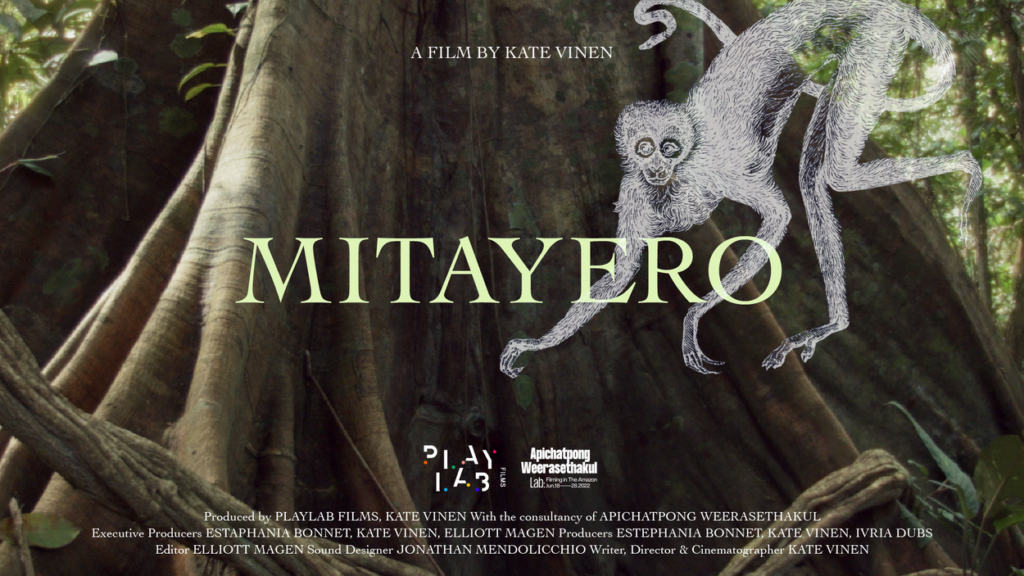
In 2022, award-winning writer and director Kate Vinen journeyed into the Amazon Jungle alongside Apichatpong Weerasethakul for the PlayLab Creators Lab, emerging with the short film ‘MITAYERO’. The film explores the elasticity of time and memory, exploring the liminal spaces of the jungle and its nooks and crannies. I sat down with Kate to learn more about the process of creating a meditative, visceral short.
PARKER: Can you tell me what the PlayLab Films Creators Lab is? What the experience was and what it meant for you?
KATE: Well, two of my biggest, wildest dreams would be one, going to the Amazon and two, learning from Apichatpong (Weerasethakul). So the combination was absolutely overwhelming.
It was an opportunity to connect with a global filmmaking community, which is really important to me. It was a chance to keep learning and making. I’ve got a lot of filmmaker friends and I’ve witnessed them have gaps where there’s not a lot of making because that is expensive; you need crew. I love that it was an opportunity to learn and make and also to really challenge myself, because I’ve never shot prior to the Amazon lab. I’ve never used a camera myself. So that was a huge, scary aspect.
PARKER: Well, I was going to ask about the experience of actually making Mitayero and the mentorship process under Apichatpong Weerasethakul, and also the experience of actually using the camera and going out into the jungle and filming.
KATE: Yeah, I’ll break that into two answers.
The experience of being mentored was really holistic, which I love. I like when things feel like they’re just your life. Apichatpong is so personable, I say he’s a monk that makes films. He’s got an amazing grasp of his own ego.
He straight away said “I’m not here as a teacher, I’m not here as a mentor. I’m here as one of you. I’m here to learn. I’m here to engage. So let’s have a conversation.”
He started the day with us, meditation at 6 a.m. in the jungle. And even that was part of his mentoring, in terms of as a filmmaker, you want to be present. You want to be centered, you want to be perceiving as much as possible so that you’re alive to the moment. And then he just dropped wisdom bombs throughout the day.
And then every night after dinner, we would hang out in this just dream… You know, we were right deep in the jungle, but in this really cool place that’s there to support artists and scientists.
So you’d be hanging out and you can see monkeys jumping in the trees outside the window. We would have these conversations from 8 PM to midnight, just really profound conversations…
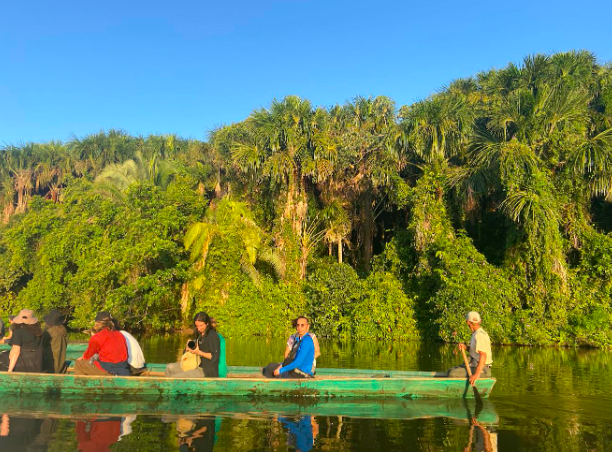
PARKER: That sounds so dreamy.
KATE: It was. I mean, it was absolutely not without challenges. So dreamy plus extreme challenge.
In terms of actually making, that was hard because number one, the thing that feels most important to share is, as an Australian that’s quite aware of Indigenous ethical concepts and issues, it was not easy being one moment in Sydney, the next minute I’m in the Amazon, working with and around Indigenous people with no deep connection, no intricate understanding. I didn’t know how to access the place and what was appropriate for me.
I also didn’t speak Spanish. So any Spanish speakers were at a real advantage because they could speak to the local people and navigate things relationally. I had to work through a translator and it’s just not the same as having one on one direct connection.
And then two, it’s a very wild place; You’re traveling by canoe, you’re walking, you need to carry water with you, it’s super hot. I was also aware that I’m a woman. So I noticed at the lab, a lot of the guys were able to be much more adventurous. I’m like, I want to do this stuff. The guys do that. Even being alone one of the days I was shooting, I was aware that it wasn’t completely safe. You don’t know the place, you don’t speak the language, you don’t have mobile reception, it’s quite vulnerable. But, I live to tell the tale.
I can’t tell you how anxious I was because I’d hoped to have time to learn and practice before I went with the camera. I was working four jobs to pay for the opportunity to go. I was just so busy. So there were some lovely cine/directors there that were like, “that’s this button…”
But I made hilarious mistakes. You know, I didn’t know how to operate the ND filter. So my favourite shot that I got was too blown out. And just kicking myself for it. Things were different when I was learning and coming up. As a teacher now, I’m amazed at watching women and how they’re not as afraid to use cameras. When I went to film school, there was one female cine, two in the whole industry. Things have come so far.
I set myself a challenge and I wanted to share the experience I was having in the Amazon, which was in relation to the time. I’ve never experienced time like that anywhere.
There was a sense of an elasticity of time. It was really stretchy, it kind of felt like some seconds were eternities, and then at the same time, things were moving really fast.
I wanted to capture that in the film. Using the locked off still shots makes the most sense for that because time can move within those frames.
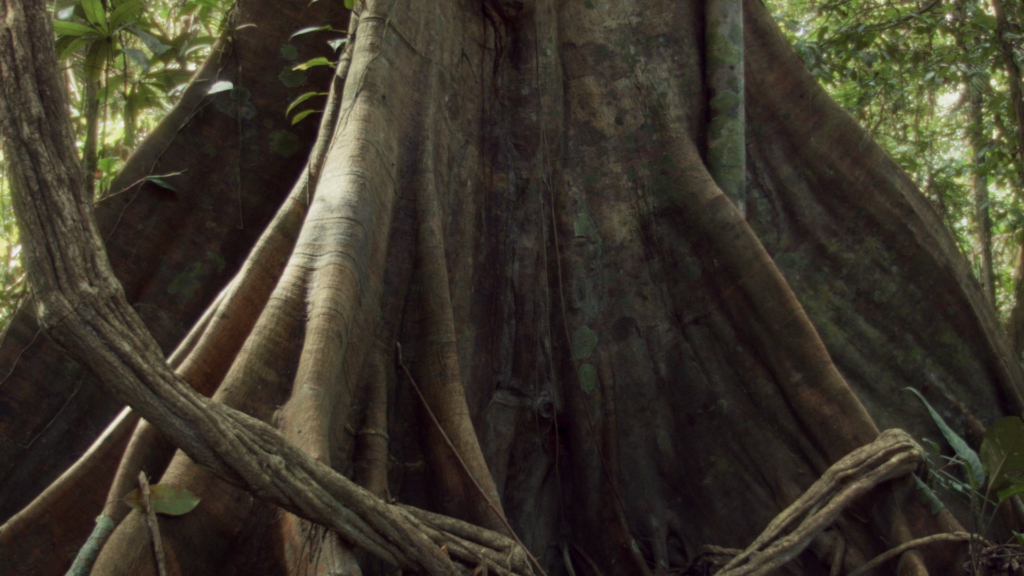
PARKER: With the meditation and the being present and centered in the space, how do you think that that informed your film?
KATE: As a director, I want to share how I perceive the world with my audience. And I like experimenting. I’ve actually done a number of things in the past 15, 20 years, which are connected to perception. And when I was younger I was a huge reader and watcher of cinema and it showed me all these different perspectives and ways to access the world. And I really wanted to make sure I was living as presently as possible.
It was about getting into my body. Apichatpong is very… I love this so much and I will admit it is the opposite of what film schools teach you; it’s instinct, don’t overanalyze, don’t become too in your intellectual body. We have these other bodies.
It was about being physically present even if you’re uncomfortable. I was so hot, sweaty, there were bugs flying at my face that sounded like helicopters, but really noticing my physical body in the space, and listening, thinking about my relationship being there, how can I be there in a non judgmental way, in a way where the space invites me?
Genuinely the film is an experiment. It’s actually amazing that it’s being screened in festivals because I had this idea prior to this film that it had to be formal and it had to be perfect before it would ever screen in a festival, but this is me playing.
This is me in this space going, okay, I’m going to show up here, listen, be present, and I’m going to sense what the space is telling me.
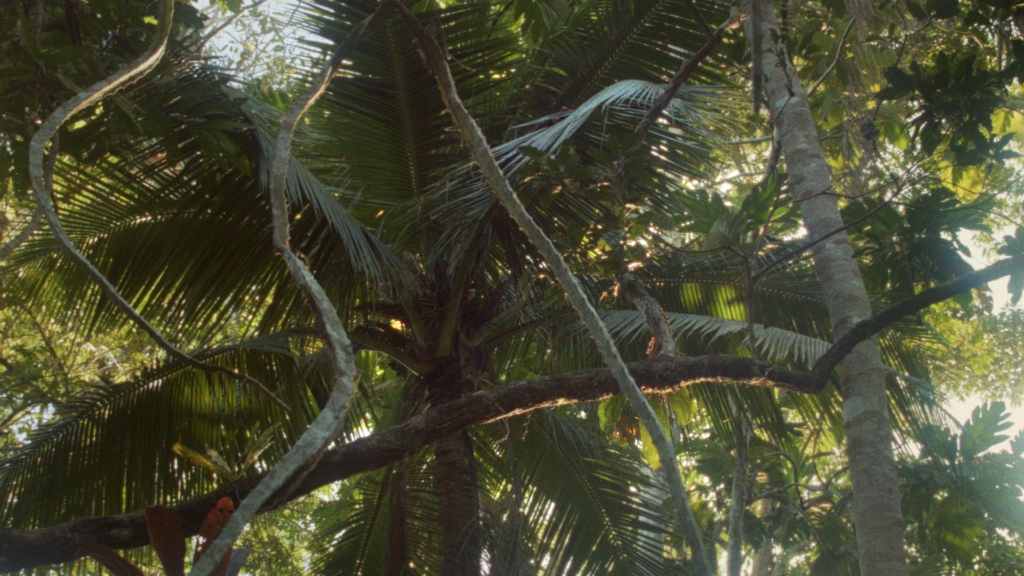
I was so intrigued by this location, I got a spark when we got to this location, which was this quiet, empty… I called it a dead farm.
At one point it would have been abundant, but it had just gone into ruin for some reason. Then I found out that there was this man who’d lived there on his own for 17 years.
But I’m a filmmaker from Australia trying to make a film that hopefully gets into festivals and he’s just there doing his thing, you know, there isn’t a reason.
PARKER: So how did you begin the relationship with him? And then how did you maintain it?
KATE: My God, when I think back, it’s such a nice experience. I met him, and he stayed with me the most out of everyone that I’d met in those two days. It was quite a remote location. I had to go back to see if he was there and if he was up for it, but knew to pack all my stuff to shoot.
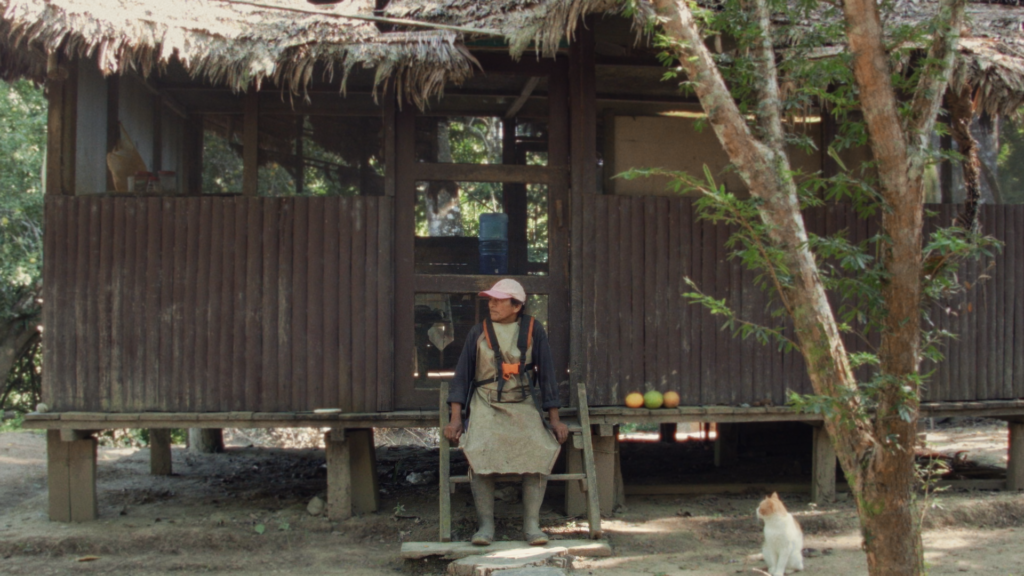
And then we went back and he wasn’t around. We waited for some time. And then I went with a translator, but I didn’t have the translator all day. So they helped me with access. But then they left and it was just him and I, and that was a lot harder.
I filmed as much as I could with him until it got to the point where it was really clear…I could vibe that he was not at all digging it.
And I just thought, I’ll craft what I can from what I have. I’m not going to push someone ever.
And then, he went into his sleeping quarters and I didn’t know what he was doing. I was like, is he just going to go have a nap and not say goodbye…
He ruffled around in there and then came out with some kind of absolutely delicious treat, and the way he gave it to me was like giving me one of the most precious things. And that was a very sweet moment.
PARKER: So who are the two voices in the film, is that him talking to the translator?
KATE: Great question. It all started with that struggle to feel comfortable accessing an Indigenous space. I overheard that there was a professor that lived in the closest town, which was one and a half hours down river by canoe and that he’d been collecting stories in the region his whole life. And that he had a book of them in Spanish. I thought, oh my God, it would be so good if I got my hands on that book, because it would mean that I can understand this place.
I found this story, it’s a conversation between a husband and a wife. It’s a man telling a woman how it’s going to be. And it’s a woman being like, “what? I don’t want my life to be like that. Why should my life be dictated by what you want?”
I loved the visuals, it’s his guilt of hunting wild animals. It got me thinking a lot about people who still hunt for food. It’s like, when you’re in the Amazon, you’re as far away from a big Woolworths or Coles as you can kind of be, and you realize how disconnected from nature we are.
So the character’s in a liminal place, where that was their way of being, people hunted. But he’s then entering this farming mentality.
The voices are actors. So the male voice you hear was my guide. This incredible human being who is, my goodness, his love of the animals and birds was incredible. And hilariously, the other voice is one of the ladies who worked at the hotel that we stayed. I loved the fragility of her voice.
PARKER: Wow, that’s really cool. Because I assumed that it was the farmer character that was speaking.
KATE: That makes me really happy.
PARKER: I like how you found this story that had a spark about farming whilst discovering a dying farm. I think that’s an incredible subconscious connection that you made.
KATE: That’s really nice. I think exactly what you said. Subconscious connection.
Filmmaking is dreaming. I feel like I became disconnected from that. I was the kid who liked ghosts and dreams and stories that didn’t quite make sense. We like to think we’re very intellectual and in control, but I think there’s a lot of subconscious stuff going on.
PARKER: It’s really nice to watch something that I think really reflects that idea and listen to your thesis behind it.
KATE: And look, you know, I am probably doing what I do because of how much I used to struggle with being present. I am a creative, I’m a sharer. When I see something I love, I want to show everybody.
Interview by Parker Constantine
‘MITAYERO’ is screening Saturday the 10th at 8:30pm & Saturday the 17th at 8pm before ‘Samsara’ at Antenna Film Festival.
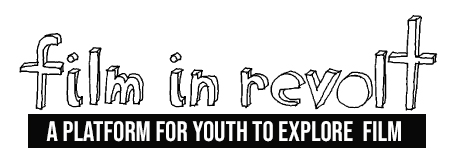
This was an insight into the incredible thought and feeling behind a little bit of art which I can’t wait to see. I am sure it will be a much deeper experience now that I have a grasp of how and why it was created and under the circumstances. I can only hope Kate continues to show us her incredible mind through her films in the future